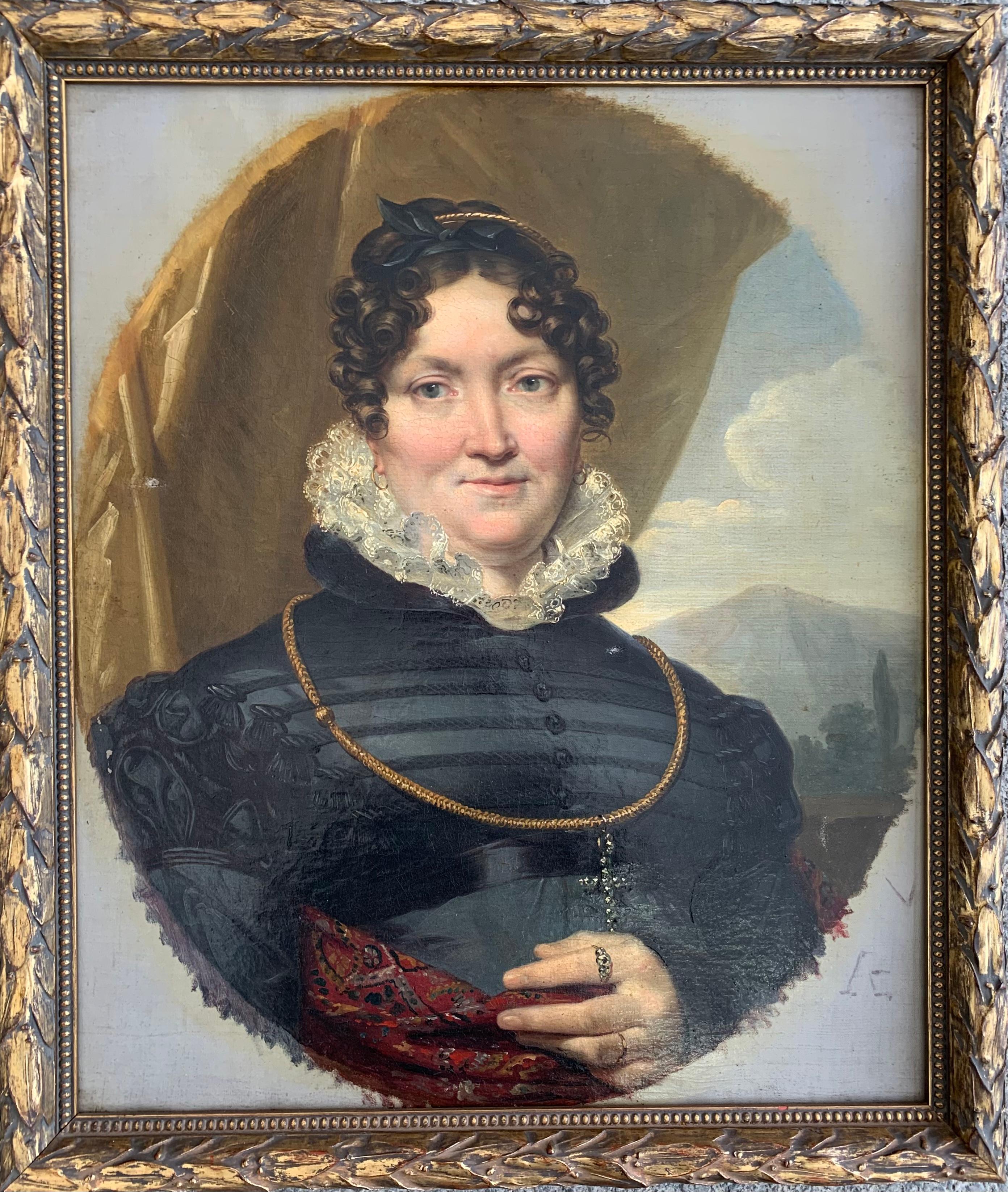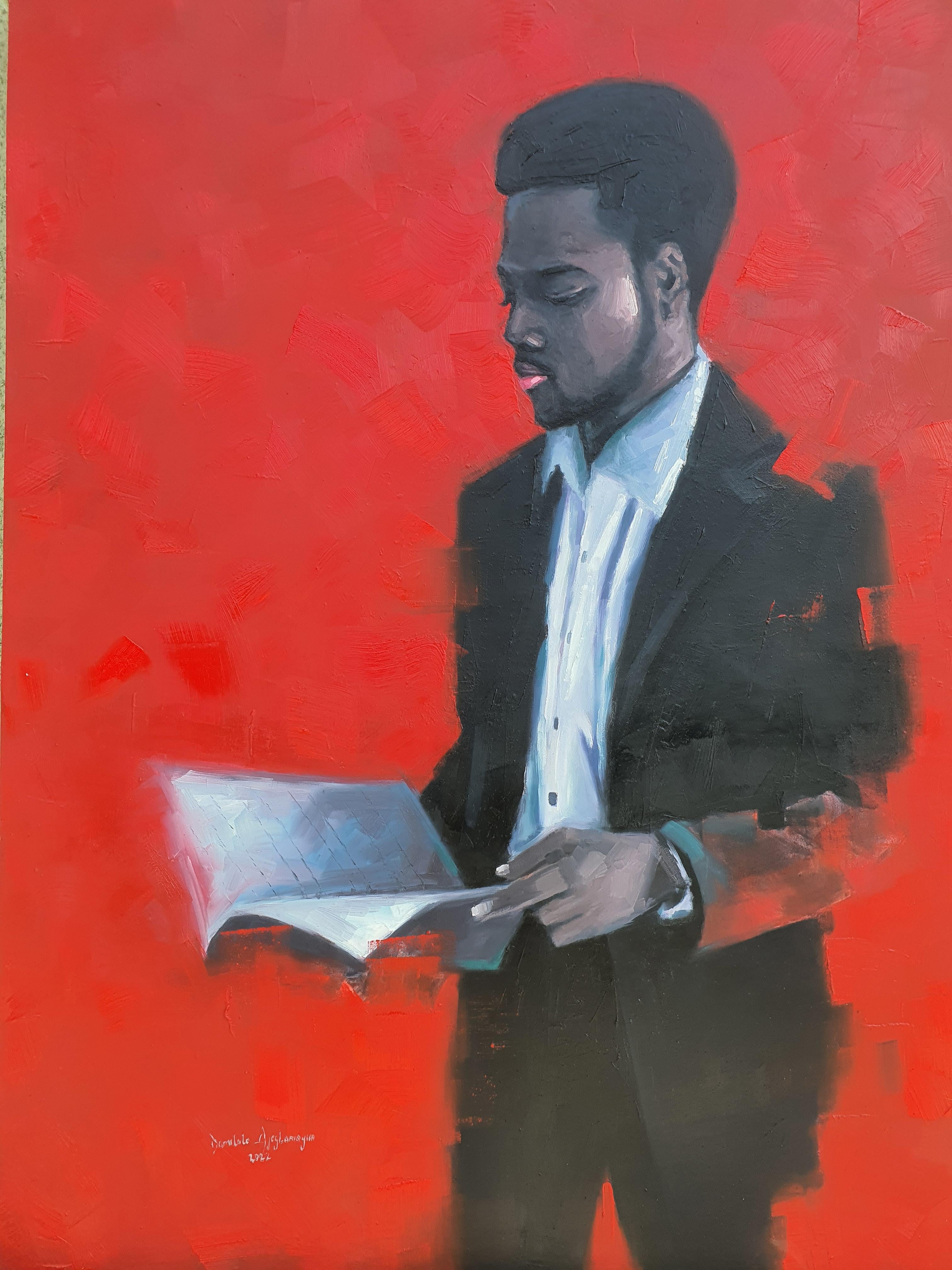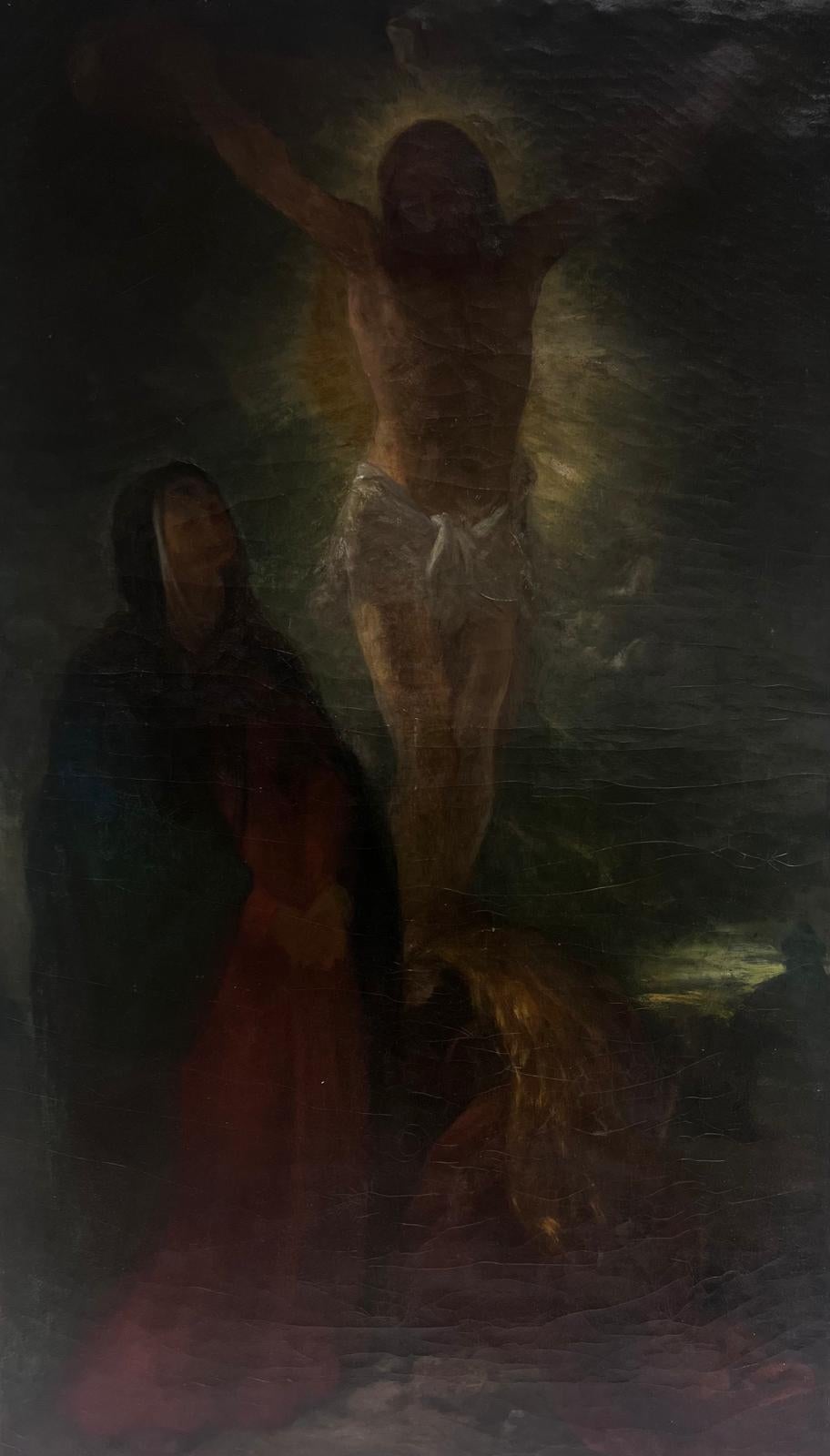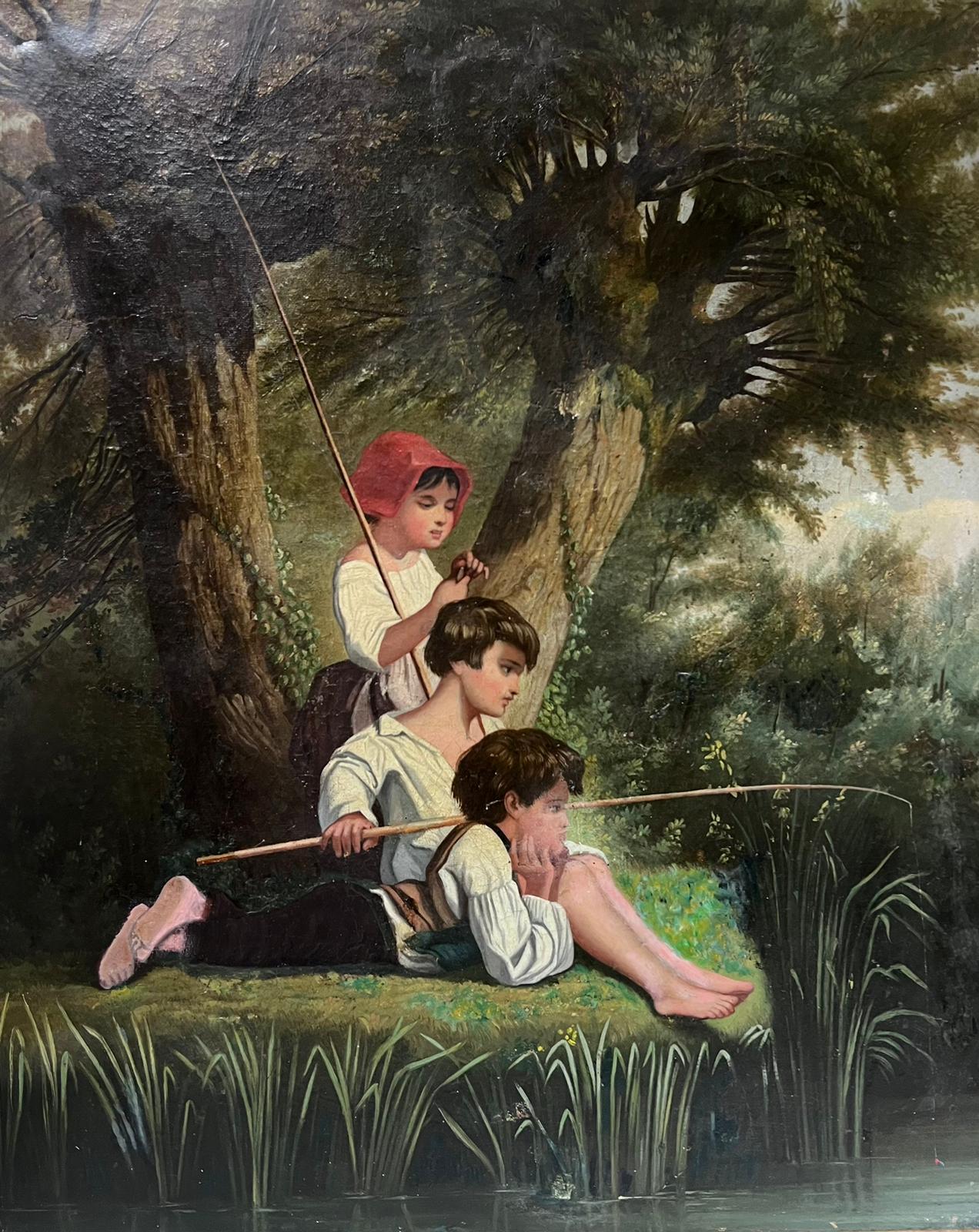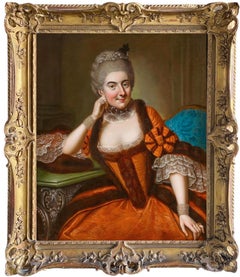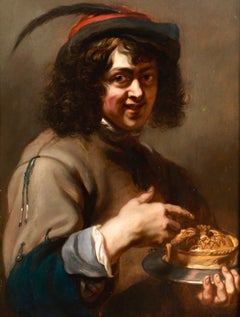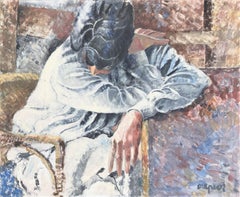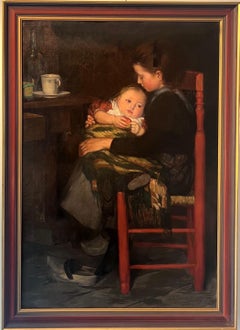
Large oil from 1902 - German school - A portrait of Sisterly love
View Similar Items
Want more images or videos?
Request additional images or videos from the seller
1 of 16
August AlgermissenLarge oil from 1902 - German school - A portrait of Sisterly love 1902
1902
About the Item
- Creator:August Algermissen (1872 - 1902, German)
- Creation Year:1902
- Dimensions:Height: 37.41 in (95 cm)Width: 25.6 in (65 cm)
- Medium:
- Movement & Style:
- Period:
- Condition:Lovely and ready to hang.
- Gallery Location:Antwerp, BE
- Reference Number:1stDibs: LU1423214281542
About the Seller
5.0
Gold Seller
These expertly vetted sellers are highly rated and consistently exceed customer expectations.
Established in 2020
1stDibs seller since 2020
349 sales on 1stDibs
Typical response time: 7 hours
More From This SellerView All
- 18th century German portrait of a Princess Sofie Brunswick by a female masterLocated in Antwerp, BEImportant 18th century German portrait by the female master painter Anna Rosina de Gasc depicting Sophie of Brunswick-Wolfenbüttel Anna Rosina was born in 1713 into a family of painters of Polish noble origin in Berlin. Her mother was Maria Elizabeth Kahl from Pomerania. Her father, Georg Lisiewski (1674–1751), taught painting to Rosina and her siblings Anna Dorothea (1721–1782) and Christoph Friedrich (1725–1794). She later studied with the painter Antoine Pesne...Category
18th Century Romantic Portrait Paintings
MaterialsCanvas, Oil
- 19th century French Portrait of a boy - 1897 Friendship giftLocated in Antwerp, BEClaude Firmin (1864-1944), Portrait of a Young Boy on 19 October 1897 Claude Firmin, a painter from Avignon and member of the Groupe des Treize, created this superb yet intimate por...Category
19th Century Romantic Portrait Paintings
MaterialsOil, Panel
- 17th century Flemish Old Master - A young boy enjoying a pie, allegory of tasteLocated in Antwerp, BE17th century Flemish old master painting, Allegory of taste The very fine painting depicts a young boy, cheekily tasting a delicious pie. He's looking at the viewer with eyes twinkl...Category
17th Century Old Masters Figurative Paintings
MaterialsCanvas, Oil
- 18th century French Old Master Portrait of a Noble ManBy Joseph VivienLocated in Antwerp, BECaptivating French old master portrait of a gentleman around 1710-1720, attributed to Joseph Vivien The painter has wonderfully captured the character and spirit of the gentleman, i...Category
18th Century Old Masters Portrait Paintings
MaterialsCanvas, Oil
- 17th century Flemish Old master - Silenus feasting - Wine GodLocated in Antwerp, BE17th century old master painting "Silenus feasting", likely studio of Sir Anthony Van Dyck Born in Antwerp in 1599, Anthony Van Dyck entered the studio of Rubens (1577 - 1640) at the age of nineteen. Quickly, the master perceives the talents of the young prodigy and makes him his first assistant. Van Dyck, for his part, has a particular admiration for the man whose name is known throughout Europe. In 1619, he was inspired by a drunken Silenus by Rubens, produced one or two years earlier for a composition on the eponymous theme. This work, now in the Dresden Museum, appears to be the first version of our painting. That work has an illustrious provenance; it was recorded in the private collection of Leopold Wilhelm (Archduke of Austria) in 1662, in 1722 it was bought by the famous German painter Antoine Pesne for the King of Saxony in Dresden (Staatliche Kunstsammlungen Dresden - Gemäldegalerie Alte Meister, Dresden, inventory number 1017). From 1945 until 1955 it was on display at the Pushkin Museum in Moskou, after having been taken by Russia after the Second World War. It was then returned to the Staatliche Kunstsammlungen Dresden where it is still on display. Our painting is of a fine quality and has been painted by a skilled and confident hand. It displays some slight variations in the composition when compared to the original; the legs of Silenus are smoother and less hairy, more humanoid than satyresque. There might also be a pentimento visible at the level of the legs where one observes traces of hair on and under the material. This area can be compared to that of a canvas by Van Dyck kept in Brussels, of a still drunk Silenus whose animal legs are formally treated in the same way as the ones in our composition. Furthermore, the skirt of the figure to the far left has a purplish-red colour in our work, whereas in the first version it appears to be white. There also appear to be differences in the sky, firstly the clouds are shaped slightly different, the sky in our painting has a more vivid colour and there is also a golden hue of a sunset visible to the far left. This treatment of the background appears close to that of a Saint Rosalie, now kept at the Metropolitan Museum in New York and dated 1625, which might offer a reference for dating our painting. In the evanescent aspect, as non finito of its figures, it is interesting to compare our Silenus to a Saint Sebastian, conserved in the Escorial Museum in Madrid. Also, the theme remains rather curious. According to Barnes and Porter, Rubens, like Van Dyck after him, was partly inspired by Book XI of Ovid's Metamorphoses, but a second literary or pictorial source remains unknown (1). For the original composition, Stephan Maaser, art historian, establishes a correspondence between the position of Silenus, referring to that of a Christ at the moment of the Lamentation or the Descent from the Cross (2); the female characters on the left and the male on the right refer more to Mary Magdalene and Saint John than to the Phrygians or the members of a bacchanalian procession. Finally, note that Silenus is not usually a faun. The success of the composition at the time of its public reception and its engraving by Franciscus van der Steen really contributed to the dissemination of the work. At the same time, it testifies to the intense activity of the painter and his studio in Antwerp, before he left to work at the English court. About Silenus: In greek mythology, Silenus was the tutor and foster-father of the wine god Dionysos, who was entrusted to his care by Hermes after his birth from the thigh of Zeus. The young god was raised by Silenus and nursed by the Nysiad nymphs in a cave on Mount Nysa. Silenus was, in essence, the spirit of the treading dance of the wine-press, his name being derived from the words seiô, "to move to and fro," and lênos, "the wine-trough." Once, when Dionysos was travelling through Phrygia, Seilenos became lost and was captured by King Midas. The king treated him hospitably and as a reward Dionysos granted him his golden touch. The artists biography: Born in Antwerp on 22 March 1599, Anthony van Dyck was the seventh child of Frans van Dyck, a wealthy silk merchant, and Maria Cuypers, who was renowned for her embroidery skills. In 1609, when he was ten years old, his parents apprenticed the precocious youth to Hendrik van Balen (1575-1632), a painter of small cabinet pictures and dean of the city's Saint Luke's Guild. Although the length of Van Dyck's stay with Van Balen is not known, it probably lasted three to four years. Van Dyck registered as a master in the Antwerp Saint Luke's Guild on 11 February 1618, by which time he was already in demand as a portrait painter (see the NGA painting, Portrait of a Flemish Lady...Category
17th Century Old Masters Figurative Paintings
MaterialsOil, Canvas
- 17th century Old Master painting - Allegory of Justice - truth demons skeletonLocated in Antwerp, BELate 17th, early 18th century old master oil painting depicting an allegory of Lady Justice holding demons at bay Our painting, likely a sketch for a much larger work,, conveys a pr...Category
18th Century Old Masters Figurative Paintings
MaterialsCanvas, Oil
$3,239 Sale Price35% Off
You May Also LikeView All
- Fur Trapper in Winter - Portrait in Oil on CanvasLocated in Soquel, CAFur Trapper in Winter - Portrait in Oil on Canvas Majestic full length portrait of a fur trapper standing in the snow by John Pieron. A man stands an...Category
Late 20th Century Romantic Figurative Paintings
MaterialsOil, Canvas
- Melancholy female figure oil on canvas paintingBy Josep Maria DraperLocated in Barcelona, BarcelonaJosep María Draper was born in 1931 and received a great creative influence from the 1950s. Abstract Expressionism, a form of painting tha...Category
1990s Romantic Portrait Paintings
MaterialsOil, Canvas
$597 Sale Price46% Off - French Romantic School, 19th Century, Manly head of bearded man, oil on canvasLocated in Paris, FRFrench Romantic School 19th Century Manly head of bearded man oil on canvas 46 x 37.8 cm In fairly good condition, some inpaintings visible under UV light, mainly in the backgrounds ...Category
1850s Romantic Portrait Paintings
MaterialsCanvas, Oil
- The Fair Skipper: boating on a mountain lake ca 1830 the Swiss Alps paintingLocated in Norwich, GBHere is an almost two hundred year old painting which is so irresistibly charming that it's crazy! You may have seen painted landscapes, portraits, genre scenes - but how many pretty...Category
1830s Romantic Figurative Paintings
MaterialsCanvas, Oil
- Ca. 1820 Portrait of a Woman with Kashmir shawl.Located in Firenze, ITCa. 1820 Portrait of a Woman. Léon Cogniet (1794-1880, Paris), attributed. French school of 19th century. Tecnicque: oils on canvas. Dimensions: 70cm x 61cm 20th century wooden...Category
1820s Romantic Portrait Paintings
MaterialsOil, Canvas
- Mastery IV (Confronting Your Fears)By Ajegbomogun DamilolaLocated in Ibadan, OyoEveryone holds his fortune in his own hands, like a sculptor the raw material he will fashion into a figure. But it’s the same with that type of artistic activity as with all others:...Category
21st Century and Contemporary Romantic Portrait Paintings
MaterialsCanvas, Oil
Recently Viewed
View AllMore Ways To Browse
German Art Of Children
Love Above All
German Early 20th Century Painting
Two Love Seats
German Portraits 19th Century
Early 19th Century Portrait French
Large Antique Safes
German 19th Century Oil Canvas
Antique Love Seats
Large German 19th Century Painting
19th Century German Painting Portrait
19th Childs Portrait
German Antique Board
Early 20th Century Childrens Portrait
German Art Hermann
Europe Felix
Antique French Love Seat
French Becker




